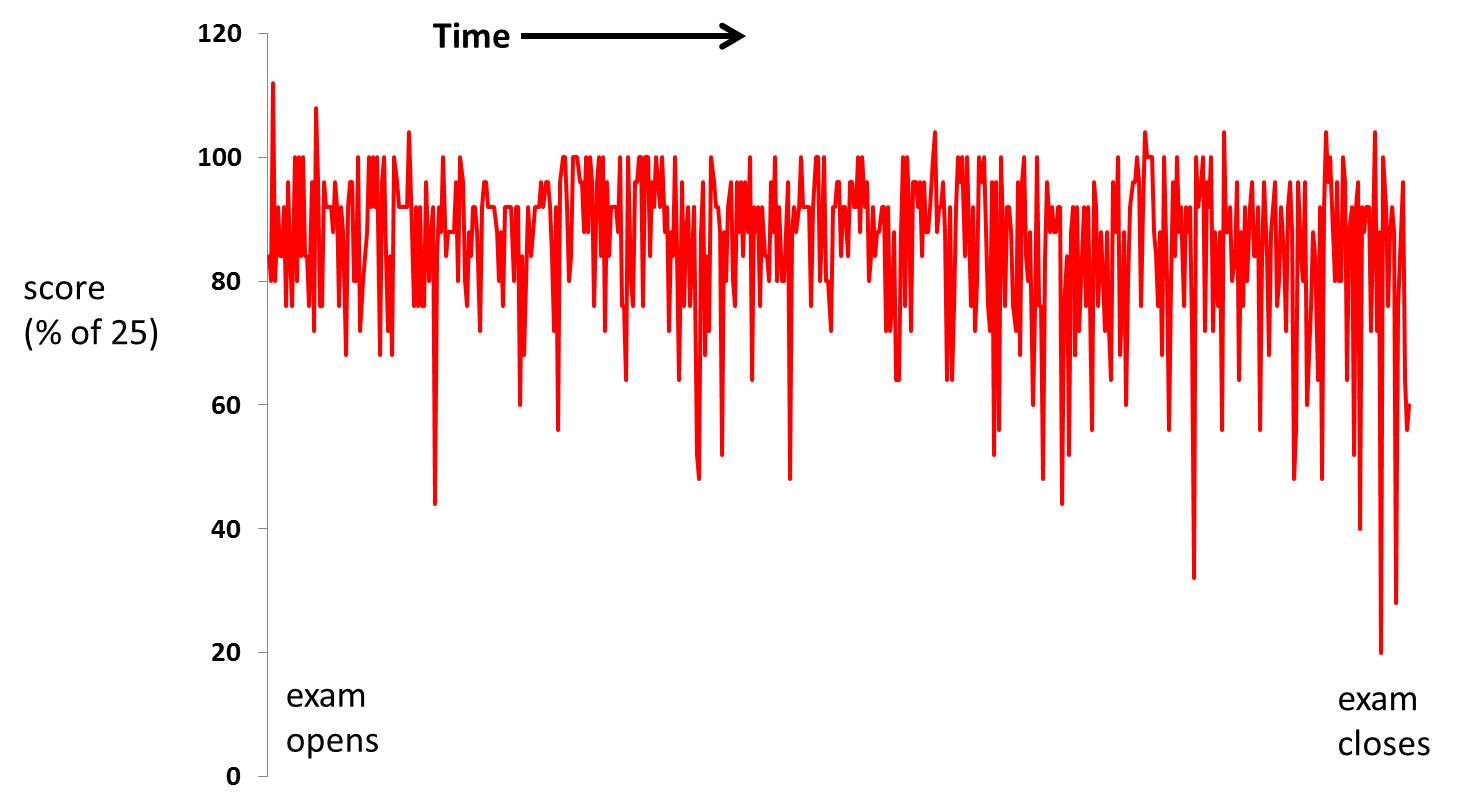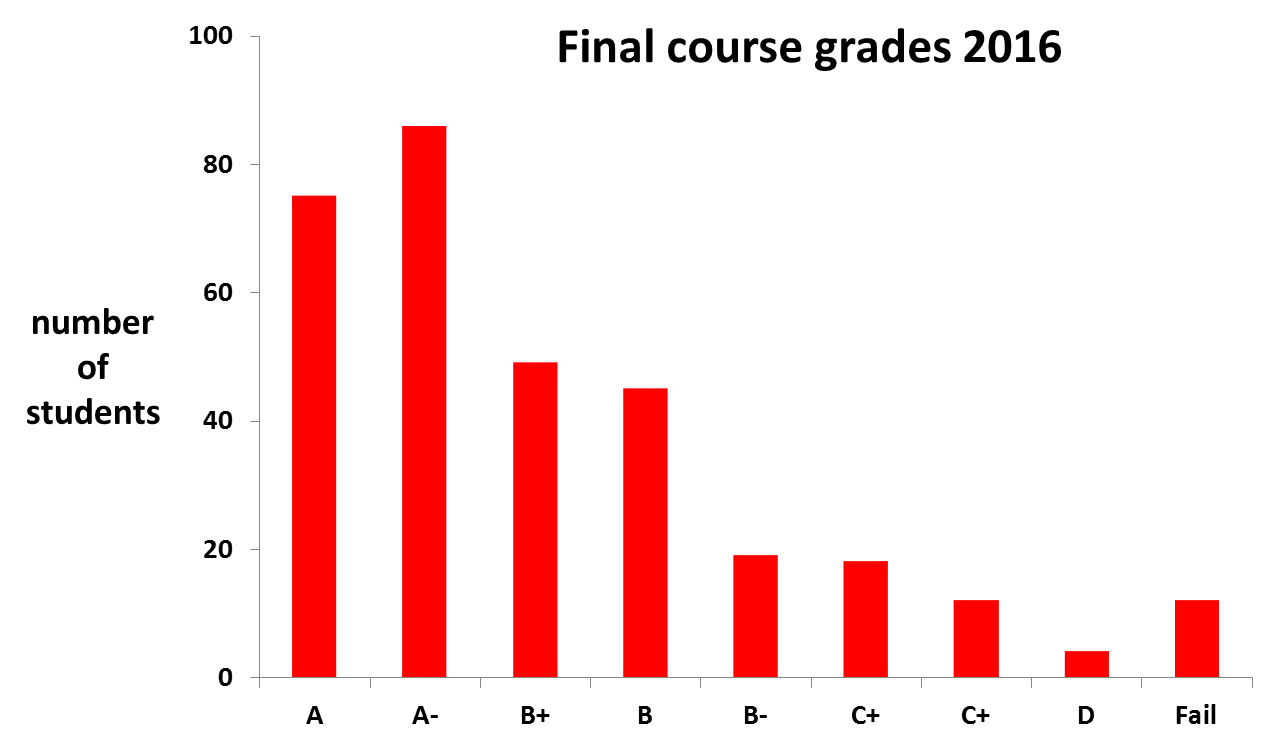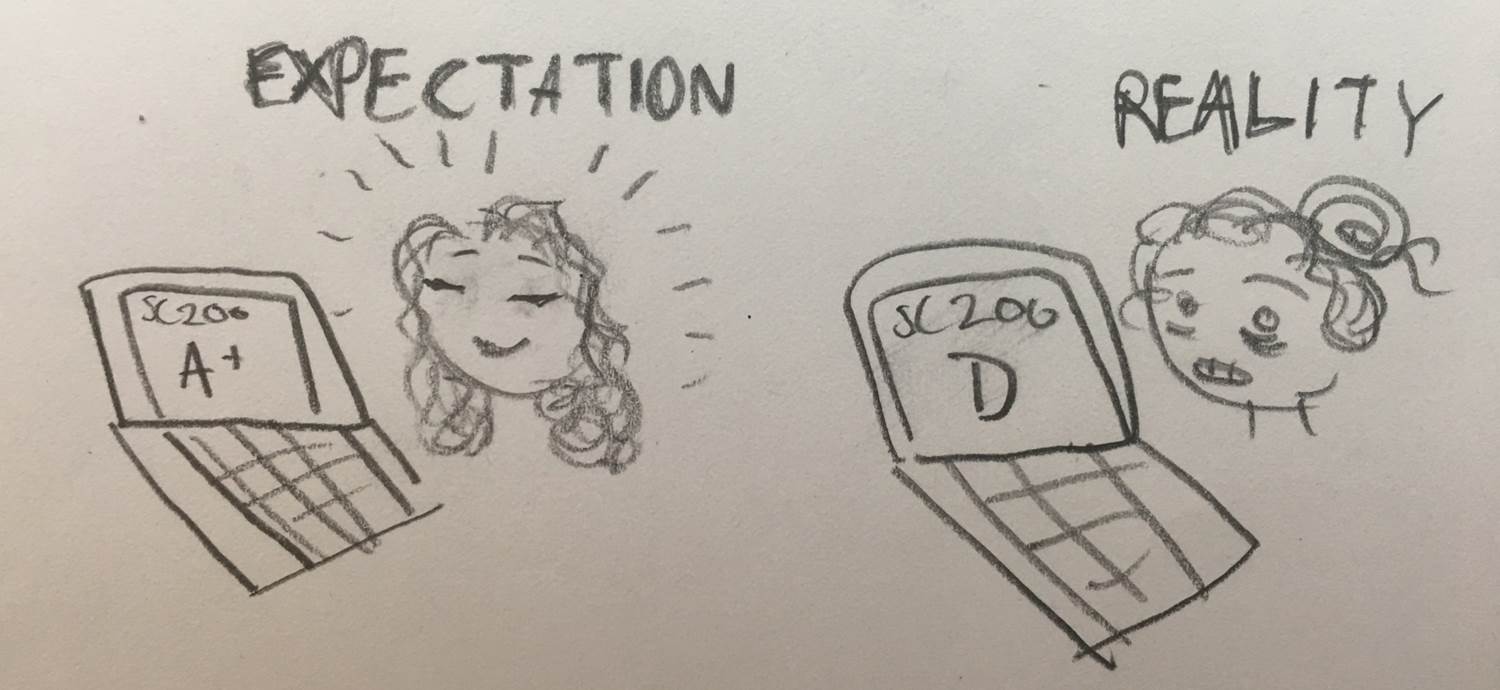 My use of extra credit has grown over the years, despite my concerns about grade inflation. I use it to
My use of extra credit has grown over the years, despite my concerns about grade inflation. I use it to
- emphasize important soft skills like time time management
- provide a buffer against student requests for more grade
- provide a buffer against students who complain my tests are too hard.
This year I really went crazy with it, in the end offering nine different routes to extra credit. I capped it at 10% so that extra credit does not dominate the grade, but within that constraint, a student can go for it as they wish. Much to my amazement, almost no students make anything close to full use of it. It is much easier to get 10% through extra credit than it is to get an extra 10% by doing better on the tests or blog.
I offered extra credit for:-
- Particularly lucid, stimulating, artistic or lateral blog posts (max 5%/post). This is to encourage/reward outstanding work. I thought few students did enough to deserve this, but it’s very good to have the option to reward those who go above and beyond.
- Suggesting exam questions. You have to really know your stuff to write exam questions. Just 5 students offered any up, even though I’d give them 2.5% for every question I used.
- Finding a mistake in an class test or an exam that causes me to regrade (max 5%/mistake). A couple of students suggested mistakes, but they were typos and so did not need regrading. Nonetheless, I think this extra credit is good because it emphasizes the possibility that Professors can be wrong, it gets hypervigilance going, and students who argue with me learn, even if they are wrong (especially if they are wrong?).
- Partaking properly in the first blog period (1%). This is an anti-procrastination (get-off-your-butt) carrot which I was trying for the first time. It did not work at all: only about 100 students participated properly, fewer than last year when no extra credit was available.
- Blogging ahead of deadline (2%/deadline). This was a time-management carrot. It too did not work.
- Surrendering phones in class (1%/time). This did work.
- Writing an extra blog (2%). I asked the students to write about something they learned in class and how it had or might change their life. Just nine students took advantage of this. Maybe that mean the course had no impact on the 310 other students. But I thought all of the nine were really interesting, especially this and this and this and this.
- Opt in to names in the hat (1%). A little under a third of the class did this, which says something about students, but nonetheless, I liked this solution to the problem of cold-calling students in large classrooms.
- A bribe to get the SRTE return rate up (1%). I wasn’t going to use this bribe this year, but with just a few days to go, only 30% of the students had given feedback through the Student Rating of Teaching Effectiveness system. Since that 30% was for sure not going to be a random sample [as is clear from what appears on Rate My Professor], I offered the 1% extra credit to everyone in the class if the class return rate got about 80%. It hit 82.5%… I’ve agonized before about this shameless bribe, but I think we have to do it if we are going to take anything meaningful from the SRTEs.
On average, the class got 4.7% extra credit. That’s pretty amazing, given that 4% would happen more or less automatically (3 x 1% for the phone-ins + 1% for the SRTE bribe). Just 13 students got the maximum extra credit and only 34 got 8% or more. I am sure I had more students just ask for more grade.
Bottom line? There is an administrative cost to all this extra credit, and I was able to keep on top of it only because I have Monica supporting the course. Without that, I am not sure I would keep anything except #1-3 and #9. But otherwise, I think worth persisting for the bullet-pointed reasons I give above. For professorial peace of mind, buffers against students complaints and begging are not to be underestimated. More positively, carrots are at least in principle a good way to nudge student behavior, even if there is not much sign they actually worked on my students. Perhaps the time management/anti-procrastination carrots need to be bigger (#4, #5). Just how much do I need to bribe students to do what’s good for them?









